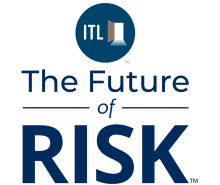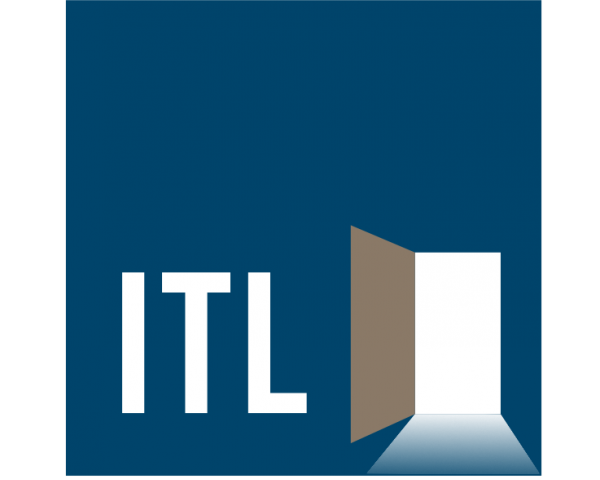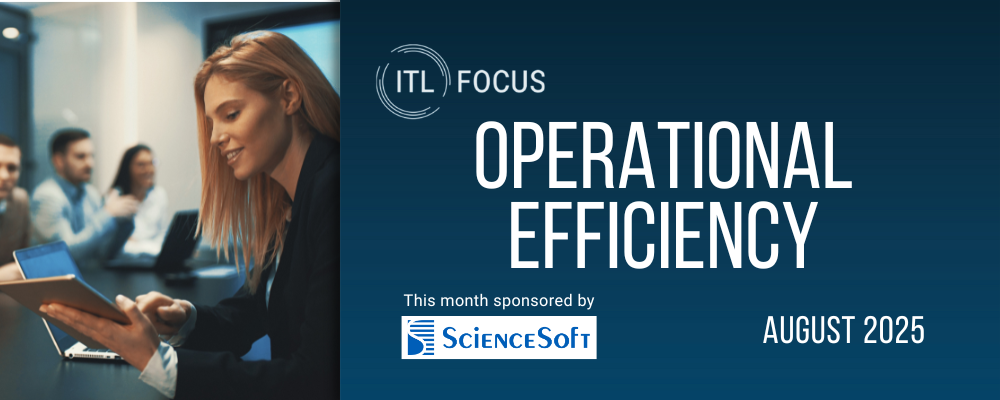Paul Carroll
What are the key opportunities for operational efficiency in the insurance industry?
Olga Vinichuk
Automation opens up immense opportunities for insurance efficiency gains. But it’s not about throwing technology, well, everywhere. The biggest potential lies where inefficiency is curbing the insurer’s profits and hurting customer experience the most.
From what I’ve seen across ScienceSoft’s clients in insurance, three areas really stand out: claims processing, underwriting, and customer servicing. Claims is where delays are most visible to the customer and where inefficiencies quickly add up in payer profitability leakage. Prolonged and gapped claim fraud detection alone costs the sector more than $300 billion annually. Automating parts of the claims lifecycle, especially around document intake, evidence validation, and decision-making, has shown huge potential. That can start with rule-based automation but becomes really powerful when paired with artificial intelligence (AI).
Underwriting is another big one. The process is often slow and heavily dependent on human reviews and judgment calls. McKinsey estimates that around 40% of underwriter work time is locked in low-value manual routines like re-keying data and profiling risks. Software to handle lower-risk, rules-based underwriting tasks has been here for decades. With machine-learning-based analytics and generative AI, we now have the tools to automate data processing entirely and assist underwriters in risk scoring. This speeds things up and boosts risk profiling precision.
Customer servicing — everything from inquiry handling to reminders — is still manual at many insurers. This hinders both efficiency and customer experience: The level of customer satisfaction with digital servicing in insurance is the lowest among all finance domains. From my experience, automating those tasks cuts operating overhead, boosts customer satisfaction, and allows servicing teams to focus on complex relationship-building work, which is where they generate the biggest value.
Paul Carroll
As we go deeper into specifics, let’s start with underwriting.
Olga Vinichuk
Underwriting is the area where the impact of automation is especially tangible in terms of speed and capacity. Risk evaluation and quoting are the primary candidates for transformation as they drive the biggest efficiency gains. In some segments, software is now helping insurers underwrite up to 80% faster and handle 40% bigger volumes of tasks with the same headcount.
A few years ago, I worked as a consultant for an aviation insurance automation project where the client's underwriting process was completely manual. I was on-site at their office, and they were literally writing out quotes on paper, stamping documents, and walking them across the office. Their risk rating algorithms lived in Excel and required manual input and calculation every time. It was incredibly time-consuming. The worst thing is that the manual process led to inconsistent underwriter decisions and limited scalability.
We helped the carrier move that entire process into a digital environment. ScienceSoft’s engineers built a custom system where underwriters can now input data about the insured object, say a cargo or a fleet, and relevant parameters like usage type and coverage needs. The software calculates premiums using the same scoring logic, now running automatically. As some of the aviation lines assumed tailored arrangements and region-specific regulatory constraints, we left room for underwriters to check algorithmic outputs and apply human judgment.
The solution allowed the carrier to write more, produce quotes faster, and free underwriters to focus on complex risks and negotiations. I can’t disclose the impact for that particular project, but it’s more or less aligned with our benchmark findings: a twofold increase in underwriters’ productivity, quoting in minutes, and 10%+ operational cost savings.
Paul Carroll
How does AI fit in?
Olga Vinichuk
AI is the natural next layer of value once rule-based automation is in place. From my experience, the most impactful applications of AI in underwriting are automated risk data processing and intelligent decision-making.
Intelligent decision-making solutions can auto-process applicant data, profile risks, and produce personalized quotes in just a few seconds. For insurance lines that mainly deal with standard, low-risk cases, smart engines can underwrite over 90% of applications outright. This opens vast opportunities for freeing up underwriter capacity.
Fully automated risk profiling became possible with the rise of large language models (LLMs). LLM-powered tools can extract risk insights from heterogeneous documents and summarize them into writing-ready files within minutes, highlighting what’s relevant and flagging gaps. That’s especially helpful in commercial and specialty lines where submissions are bulky and unstructured. Early adopters of such tools report a 2x increase in underwriter productivity and 4x faster time to quote.
With LLMs, you get not just automated risk data processing but full-scale intelligent assistance. For instance, underwriters can ask an LLM copilot to evaluate the conditions of the insured object, map risks, and interpret their implications for coverage. The tool immediately provides relevant responses, freeing the team from tedious data search and analysis. Global risk technology leaders like Verisk already have LLMs in their stack, so you can leverage the capability with a familiar platform.
Paul Carroll
What are the major opportunities for efficiency you've identified in the claims process?
Olga Vinichuk
One major opportunity lies at the claim input and processing stage. Many insurers have already implemented self-service portals and mobile apps for insureds to submit claims and evidence digitally. ScienceSoft’s clients who did that achieved a nearly 50% reduction in employee workload and 5x faster claim processing.
What’s driving the next wave of efficiency is the integration of intelligent technologies. Leveraging AI-fueled image analysis, natural language processing, and machine learning, you can automatically parse any sort of evidence, validate the data, classify severity, route the claim to the right handler, and in some cases, even settle claims outright without any human touch. From my experience, such intelligent automation helps establish a 5–10x faster claim cycle and boost adjuster productivity by around 30%.
Paul Carroll
I think there’s a lot of potential with fraud detection, if only because an AI can process a much higher volume of data than humans can.
Olga Vinichuk
Absolutely — the volume and complexity of insurance fraud make AI essential. We’re talking about billions lost annually. What really stuck with me was something I recently heard from an insurer during a project discussion: They said they were losing trust in their provider network and had to enforce stricter controls to avoid fraud leakage. That really brings home the operational impact of fraud, beyond just financial losses.
AI tools automate two critical tasks. First, they can analyze vast volumes of historical claims data to detect, say, unbundling, upcoding, or duplicate billing. These used to be handled by rule-based engines, but fraudsters adapt fast, so AI now plays a role in identifying anomalies and subtle correlations that would be hard for a human to spot in time.
The second is evidence fraud detection. For example, ScienceSoft recently helped an insurtech startup create a solution that automatically recognizes forged dental X-rays submitted by providers to justify inflated claims. We built computer vision and machine learning models to detect manipulated images. Our algorithms were trained to spot visual gaps that indicate alteration and mismatches between image content and patient data that hint at reuse. The models validate in minutes and flag nuances that seem plausible to human reviewers, all in a HIPAA-compliant manner.
Perhaps the best thing about AI-powered fraud detection is its scale. Insurers can check 100% of claims instead of just a sample without a heavy lift of manual review. This increases efficiency and dramatically reduces fraud-associated losses. And as fraud schemes increasingly become AI-supported, it’s only logical that AI becomes the tool we can’t avoid to fight back.
Paul Carroll
What opportunities for efficiency are you observing in customer service?
Olga Vinichuk
I see one of the most compelling efficiency opportunities in agentic automation. With today’s advanced large language models and cloud-based orchestration tools, insurers can deploy AI-powered agents that autonomously handle over 70% of routine service interactions, like policy lookups, claim status checks, and document submissions, without human intervention. Unlike the rule-based bots of the past, these agents deliver a smooth, conversational experience that rivals human service quality. You get your human agents freed for complex tasks and high-emotion claim cases where a real conversation is needed.
Speech-to-speech assistants are maturing, and they are especially helpful for older and less tech-savvy insureds who prefer to talk rather than use a screen. The R&D team at ScienceSoft has recently introduced an AI voice agent that can hold live calls with customers and automatically book appointments. Based on our estimates, the agent can speed the process by 40%, cut call abandonment rates by 30%, and lower operational costs by at least 50%. As it can handle multiple calls simultaneously, it can process 70% more calls per hour than a human service rep — a huge win from the efficiency standpoint.
Paul Carroll
Any final thoughts?
Olga Vinichuk
Whether rule-based or AI-driven, automation is a strategic lever for insurance efficiency, especially when deployed iteratively. Even with modest budgets, I’ve seen insurers achieve fast wins using basic tools for high-friction workflows like first notice of loss (FNOL) intake or quote generation. These early gains often justify broader investment in intelligent automation, like AI for risk scoring, fraud detection, or customer service. Once automation starts delivering measurable efficiency or improvements in insured experience, momentum builds. It’s not about a big-bang transformation — it’s about creating a scalable path from manual to intelligent operations.
Paul Carroll
Right. You can get a virtuous circle started. You spend a bit on automation, which frees up funds, which lets you invest more in automation, which… and so on.
Thanks, Olga.
About Olga Vinichuk
Business Analyst and Insurance IT Consultant









